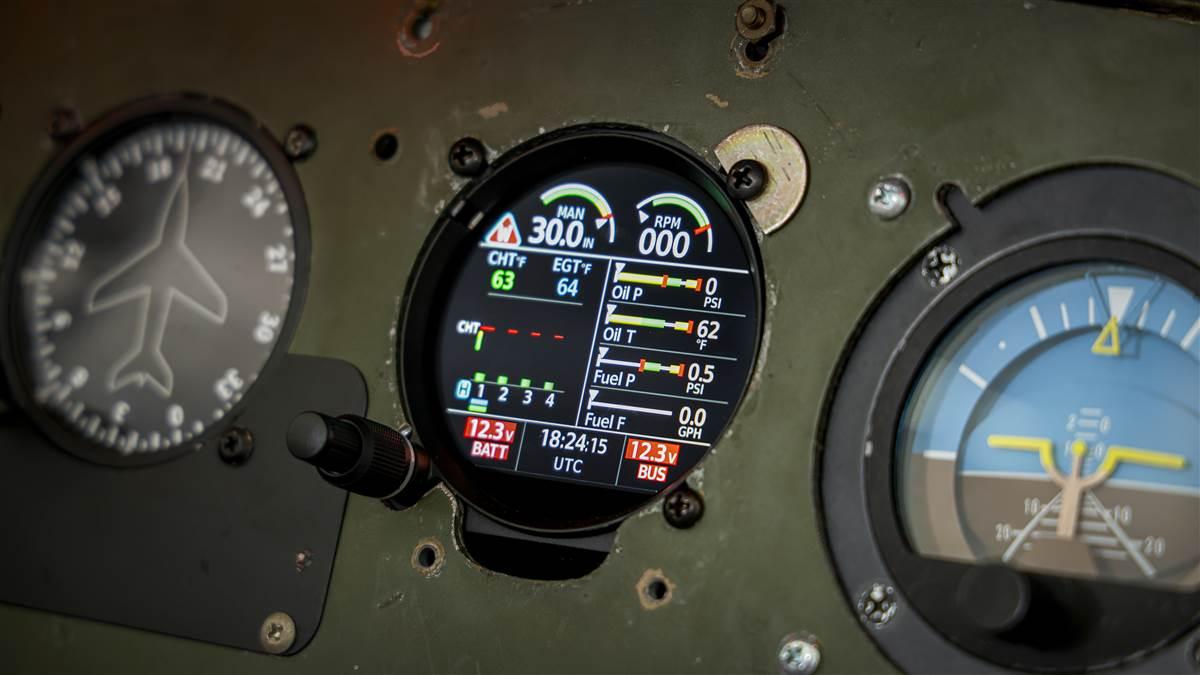Garmin GI 275 EIS
How to install without a dealer

A few weeks later a major milestone was achieved—the installation of a big engine, engine accessories, and constant-speed propeller. But without engine instruments, how would we fly the airplane to a Garmin-authorized dealer to install our new Garmin GI 275 engine indication system? It’s a trick question—the GI 275 EIS can be installed by any airframe and powerplant mechanic and signed off by any IA—so that’s exactly what we did. A&P/IA Dave Stoots installed the unit at Barnstormer’s Workshop in Williamson, Georgia, prior to starting the new engine for the first time.
Pat Coleman, manager of Aviation Aftermarket Sales, Americas at Garmin, said the GI 275 EIS is ideal for AOPA’s vintage Cessna. “The size and dimensions of this EIS are really nice because it fits into an existing rpm gauge 3-1/8 inch round hole in the instrument panel,” said Coleman. “A lot of effort went into the design of the 275. There’s a lot of stuff on the display but we’ve maximized the use of the layout and the colors and the gradients to make it still very readable. You really have to see it in person.”
Gulf Coast Avionics, a Garmin dealer, estimated it would take about 75 hours to install the EIS and run wires to the myriad sensors in our Cessna 170. Always short on time to finish the airplane before the sweepstakes ends, AOPA decided to take a shortcut. Dave Stoots contacted Lapeer, Michigan-based Midwest Panel Builders, a company that manufactures a GI 275 EIS base harness kit. The kit includes a base wiring harness and base sensor kit. Additional sensors needed for your engine application can be added à la carte so that you end up with a custom wiring harness for your airplane. “If you’re only going to install one EIS, you’re much better off having someone do the harness for you,” Coleman said. The Midwest Panel Builders harness significantly cut down the time needed to install our EIS.
There is so much information displayed on the GI 275 EIS—rpm, manifold pressure, oil pressure, oil temperature, EGT, CHT, fuel quantity, fuel pressure, fuel flow, battery voltage, amps, Hobbs hours, tach hours, flight hours, and more— the Cessna 170 temporarily has a bunch of empty holes in its instrument panel. But that won’t last long—all new avionics are coming soon to your sweepstakes airplane.



